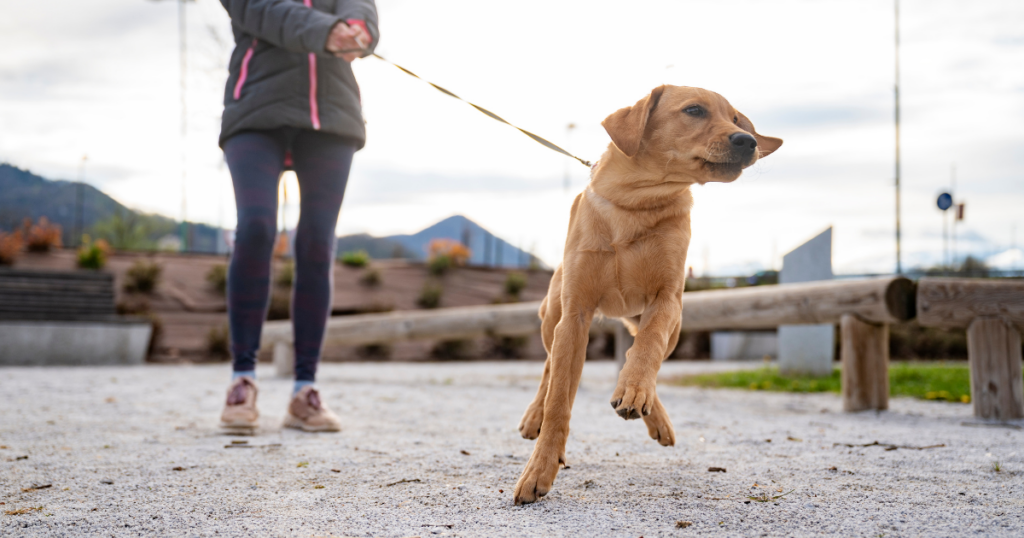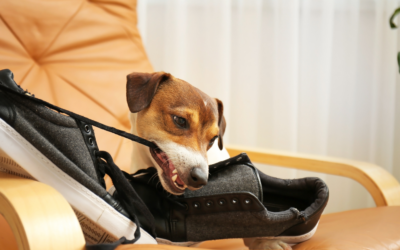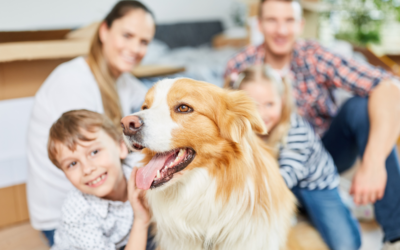Leash ‘reactivity' is an behavior issue that many dog owners face. It can be a frustrating and stressful experience for both the dog and the owner. However, with the right understanding and management strategies, leash reactivity can be overcome. This article will explore leash reactivity, why it happens, and how to effectively train and manage it.
What Is Leash Reactivity and Why Does It Happen?
Leash reactivity refers to an exaggerated or aggressive response that a dog displays when they are on a leash. This behavior can range from barking, lunging, growling, and biting. It usually occurs due to anxiety, fear, frustration, and/or perceived threat. Dogs may become reactive on a leash because they feel restrained and unable to escape from potential dangers or uncomfortable situations.
One way to help prevent leash reactivity is proper socialization and exposure to various stimuli during puppyhood. Dogs not exposed to different environments, people, and other animals may feel overwhelmed when encountering them while on a leash. Additionally, negative past experiences or traumas can also contribute to leash reactivity.
The Impact of Breeds and Individual Differences
Leash reactivity can occur in any breed or mix of breeds. While some breeds might be more prone to anxiety, this behavior is observed in a wide variety of breeds, and none are exempt.
Furthermore, each dog is unique, and individual differences in temperament and past experiences can greatly influence the development and severity of leash reactivity. A dog that is naturally more fearful or anxious might have more difficulty when other people, dogs, or frightening objects are around while on walks. A dog that has had a bad experience could also be more prone to showing this behavior.
To effectively manage leash reactivity, it is essential to adopt the right training strategies and techniques that address the underlying causes of the behavior. This may involve desensitization and counterconditioning exercises, where the dog is gradually exposed to triggers in a controlled and positive manner. Additionally, seeking guidance from a professional dog trainer or behaviorist can provide valuable insights and personalized strategies to help your dog overcome leash reactivity.

Training Strategies to Overcome Leash Reactivity
When training dogs with leash reactivity, the main goal is to change their emotional response and create positive associations with the triggers that cause the reactivity. Here are some effective strategies that can help:
Counterconditioning and Desensitization
Counterconditioning involves pairing the presence of triggers with something the dog finds pleasurable. This could be treats, toys, or praise. The goal is to create positive associations with the triggers, gradually reducing the dog's reactivity. For example, if your dog reacts to other dogs while on a leash, you can start by rewarding them with a treat every time they see another dog from a distance. As they associate other dogs' presence with something positive, their reactivity may decrease.
Desensitization involves exposing the dog to the triggers in a controlled and gradual manner, starting with a distance or intensity that doesn't trigger the reactive behavior and gradually increasing the exposure over time. This technique helps the dog become more comfortable and less reactive in the presence of triggers. It is important to note that desensitization should be done at the dog's pace, ensuring they are not too quickly overwhelmed or pushed too far.
Consistency and patience are key when implementing these training strategies. It is essential to start with manageable situations and gradually progress as the dog becomes more comfortable and less reactive. Seeking the guidance of a behavior professional can be extremely helpful in designing a personalized training plan for your dog.
Positive Reinforcement
Using positive reinforcement techniques can be highly effective in reducing leash reactivity. Rewarding desired behaviors, such as calm and relaxed responses, with treats, praise, or play can help reinforce these behaviors. For instance, if your dog remains calm when passing by a trigger, you can reward them with a treat or engage in a game of fetch to show appreciation for their good behavior. This make take some time, as anxiety or fear can cause your dog to be unable to show these behaviors until you're far enough away.
Avoiding punishment or aversive techniques is crucial when working with leash-reactive dogs. Punishment can exacerbate fear and anxiety, leading to even more intense reactivity. By focusing on positive reinforcement, you can build a strong bond with your dog and help them develop more desirable behaviors.
Remember, every dog is unique, and what works for one may not work for another. It is essential to be patient, understanding, and flexible in your training approach. With time, consistency, and positive reinforcement, you can help your leash-reactive dog overcome their reactivity and enjoy walks with you calmly and relaxedly.
Tools and Equipment to Help Manage Leash Reactivity
While training and behavior modification techniques are essential in managing leash reactivity, using the right tools and equipment can provide additional support and safety. Here are some options to consider:
Front-Clip Harnesses or Head Collars
Front-clip harnesses and head collars are designed to provide better control over a reactive dog. They work by redirecting the dog's attention towards the handler and preventing them from pulling or lunging. These tools distribute the pressure more evenly and allow for better steering and control, making walks more manageable and reducing the risk of injury.
Front-clip harnesses are particularly beneficial for dogs that tend to pull on the leash, as the attachment point on the front of the chest helps discourage pulling by turning the dog back towards the handler. Head collars, such as the Gentle Leader or Halti, gently guide the dog's head, controlling their direction without causing discomfort.

Treat Pouches and Clickers
Treat pouches and clickers are valuable tools for positive reinforcement training. Carrying treat pouches allows owners to easily access treats, enabling quick and timely rewards during training sessions. Clickers, on the other hand, help to mark the desired behavior, making it easier for the dog to understand what is being rewarded. Clicker training can also increase confidence in your dog, which is valuable when your dog is fearful or anxious.
Using a treat pouch during walks can help maintain your dog's focus on you, especially in distracting environments. Clicker training is a popular method for teaching new behaviors or reinforcing good manners. The distinct sound of the clicker signals to your dog that they have performed the correct action and a reward is on the way, facilitating clear communication between you and your furry companion.
The Role of Consistency and Patience in Resolving Reactivity
Resolving leash reactivity takes time, effort, and a great deal of patience. Consistency is vital in reinforcing desired behaviors and creating lasting change. Regular training sessions, proper socialization, and continued exposure to different stimuli are crucial in helping your dog overcome leash reactivity.
Preventing practicing the behavior is also essential. While working on the behavior, trying to avoid encounters (unless you're specifically working on them) is very important.
It is important to set realistic expectations and celebrate small wins along the way. Remember, every dog progresses at their own pace, and setbacks may occur. Stay patient, remain calm, and focus on the positive improvements your dog is making.
Understanding and managing leash reactivity in dogs requires a combination of empathy, knowledge, and effective training strategies. With dedication and the right approach, you can help your dog become more comfortable, confident, and well-behaved on a leash.
Consistency in training involves the frequency of training sessions and the use of the same commands and cues each time you work with your dog. Dogs thrive on routine and predictability, so being consistent in your expectations and responses will help your furry friend understand what is required of them.
Patience is a virtue when dealing with leash reactivity. It can be very difficult, but trying to remain calm and composed, even in challenging situations, will help. Dogs are highly attuned to their owners' emotions, so staying patient and positive can help your dog feel more secure and less reactive during walks.



